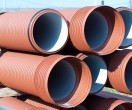Fire Retardant
Fire-retardant (FR) resins can be divided into several formulation categories: halogenated, inorganic FR, organophosphorus FR, and nitrogen-containing FR.
These resin systems are represented within two major groups of FR – Halogenated FR and halogen-free FR. The halogenated FR resins are generally better performing, less expensive, easier to process and have better physical properties than halogen-free formulations. Their disadvantage lies in toxicity levels. Halogen-free FR are a “greener” type of resin that produces less toxicity and less smoke. They also are less corrosive to application equipment and as a result, easier to handle with a wider variety of tools. The main halogenated FR resins are brominated and chlorinated, whereas halogen-free FR resins contain metal hydroxides, melamine-based and phosphorous based FR’s. Halogenated epoxy vinyl esters and polyesters also exist on the market.
The type of FR resin system used will depend on the function of the polymer and the specific fire performance requirements. Ashtrays and cookware are some examples of the use of polymers with high fire resistance. Many components in electrical and electronic components are also made with the use for FR polymers. Other uses can include transportation components, building panels, water treatment plant equipment, ducting, roofing and equipment exposed to high temperatures.



Suppliers
- AOC
- DARCO Southern
- DAVLYN Manufacturing Co
- INEOS Composites
- Interplastic Corporation
- Polynt Composites USA Inc.

 Construction
Construction Industrial / Corrosion
Industrial / Corrosion Transportation
Transportation


